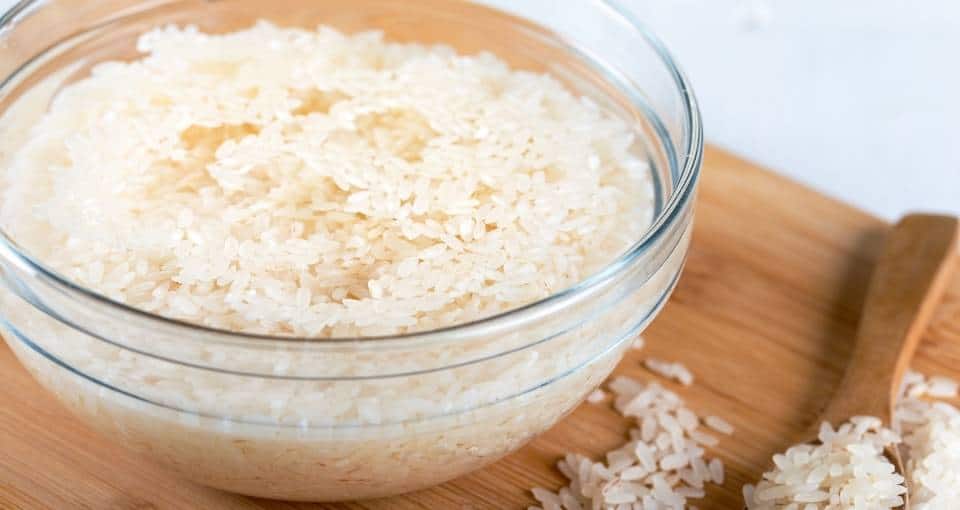There are few things more maddening than working hard to prepare a delicious meal only to find part of your dish (the rice) is all stuck together!
What causes sticky rice and what can you do about it? Surely cooking rice should be as easy as boiling water. Sadly that is not always the case and there are various things that can go wrong.
Read on to discover how to cook perfect rice and what to do if you need to fix sticky rice in a hurry!
Does Rinsing Rice Make It Less Sticky?
Rice is basically pure starch to begin with, but when it is harvested and packaged together in large amounts. Excess starch can rub off onto each piece of rice which is why washing/rinsing the rice before cooking can make a big difference.
Notice washing rice and rinsing rice are both synonymous terms for the same thing. You accomplish both by rinsing the rice because any impurities such as dirt are removed as well.
The reason rice becomes mushy and sticky is due to excess starch involved in the cooking process. As the grains of rice get larger and closer, they will start to stick to one another and clump. Rinsing rice helps to remove excess starch before cooking to prevent rice from becoming sticky.
To avoid this, it is a good idea to rinse the raw rice before you start cooking. You can rinse rinse rice one of two ways.
Method One for Rinsing Rice:
- Fill a bowl or a cup with the amount of rice you plan to cook.
- Pour in enough cold water to completely soak the rice.
- Use your fingers or a stirring spoon to swirl the water and rice.
- You will notice it becomes very cloudy with the starch coming off the rice grains.
- Now either strain it through a sieve (strainer, sift) or dump out the water without spilling the rice out.
It is recommended to repeat this rinsing and straining enough to where the water no longer becomes cloudy after stirring.
Method Two for Rinsing Rice:
The second way is very similar but more effective at removing starch from each piece of rice.
- Place a sieve (strainer, sift) in a large bowl.
- Add in the dry rice into the sieve.
- Slowly pour water over top of the rice
- Use your figures to rub and stir the rice. Ensuring that water rinses all of the rice individually
(Optional Step): Soaking The Rice
After rinsing the rice using either method. Afterward you can soak your rice for up to 20 mins.
This will further help to remove any starches and actually help the rice cook faster. As it will absorb water before cooking rather than during.
Use enough water to completely submerge the rice. Don’t use the water to cook the rice with, instead drain it first.
Avoid Burning Rice in a Cooker With These Cooking Hacks
Tips for Ensuring Your Rice Isn’t Sticky

It is important to make sure you use the correct ratio of rice to water, because getting this wrong can also result in sticky rice.
Every brand of rice and type of rice has its own ratio, and it also depends on your cookware and how the lid fits, and even the exact heat you use. No wonder even seasoned cooks can have trouble with rice occasionally!
How tight or loose the lid fits the pan and how tall or deep the pan is can affect how sticky your rice turns out, because this also affects how much water evaporates during the cooking process.
As a rule of thumb, use a cup of rice per cup of water for short-grain rice or a cup of rice to a cup and a quarter of water for long-grain varieties.
Once you figure out how much water to use for your preferred type of rice, and you get a good result, use the same pan each time, and you should end up with perfect rice all, or nearly all, the time.
Don’t Forget Rice Needs to Rest
Something else to bear in mind is that rice has to rest, just like a freshly grilled filet mignon!
If you start to serve rice the second it has finished cooking, you are going to find firm rice on the top and soggy or sticky rice underneath. That’s just the way rice cooks.
You want to give the rice enough time to completely absorb water.
When your rice has finished cooking, take it off the heat, remove the lid, and put a clean dish towel over the pan.
Put the lid back on, pressing to seal, then let the rice sit for about 15 minutes. This will allow the moisture inside to redistribute.
What To Do If Rice Becomes Sticky
If you find yourself in this ‘sticky situation’, you will want to know how to make your rice not-sticky again.
Rice also becomes sticky when the grains split and release the starch. Perhaps you forgot to rinse it first, or used too little water or too high a temperature.
If your rice is just a bit sticky, you might be able to save it.
Tip it into a colander, then rinse under cool water, using your fingers to separate the grains (Similar process to method two but after cooking the rice slightly), then proceed with the recipe.
Another tip is to dump it in a larger pan and add a generous splash of water.
Heat it over a low flame, using a fork to break up the clumps. Once the clumps start to become unstuck, take the pan off the heat, cover it tightly with a lid and leave it alone for 5 minutes.
You can then drain off the excess water and use the rice.
A ‘Cold’ Solution for Sticky Rice
Spread your too-sticky rice over a baking tray in one thin layer, and cover with parchment paper. Put it in the refrigerator for 30 minutes then microwave it until hot. You will find a lot of the stickiness has gone.
And If All Else Fails…
If your rice is seriously sticky or, worse still, mushy, you will probably need to cook a fresh batch of rice.
However, you can still use the sticky batch – try making rice fritters or fried rice balls with it.
Consider adding it to veggie burgers, stews or soups, or even making a creamy rice pudding, so it doesn’t go to waste.


